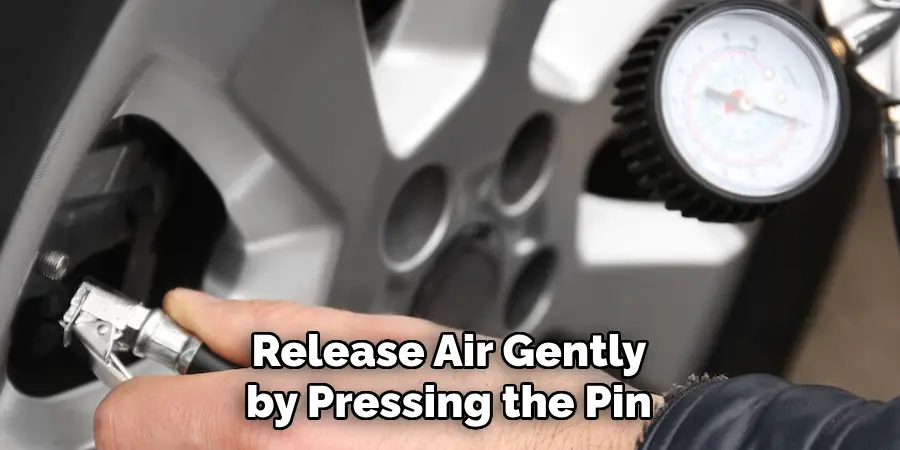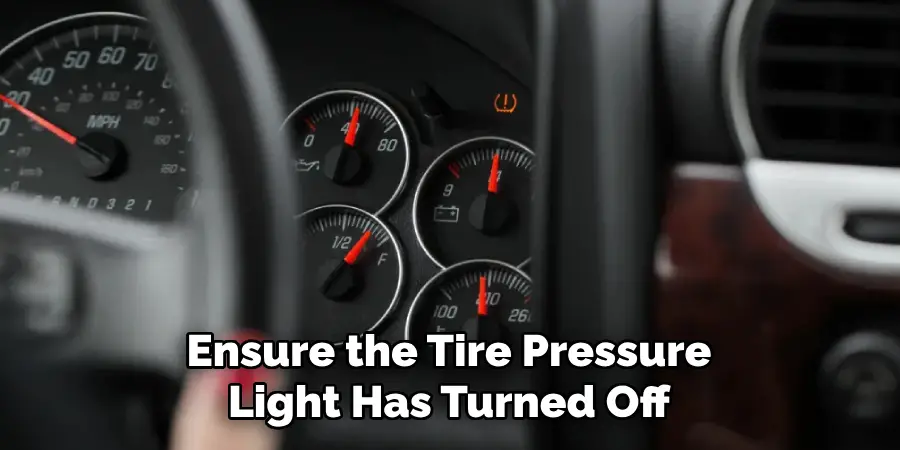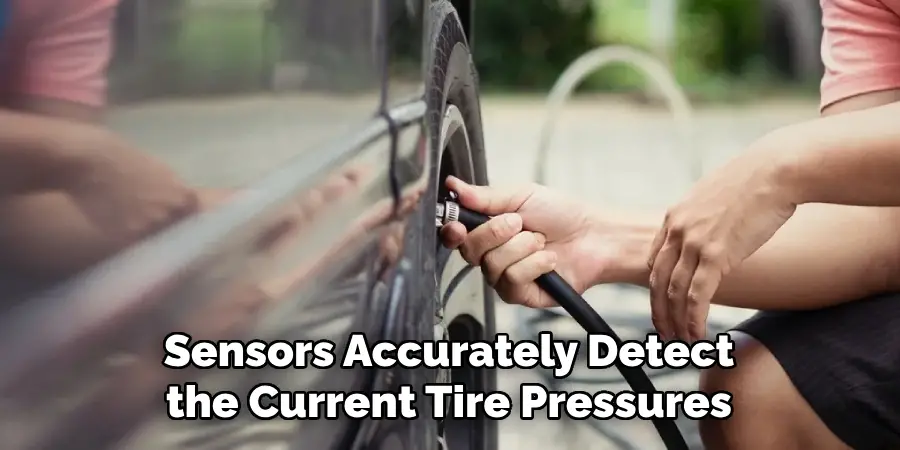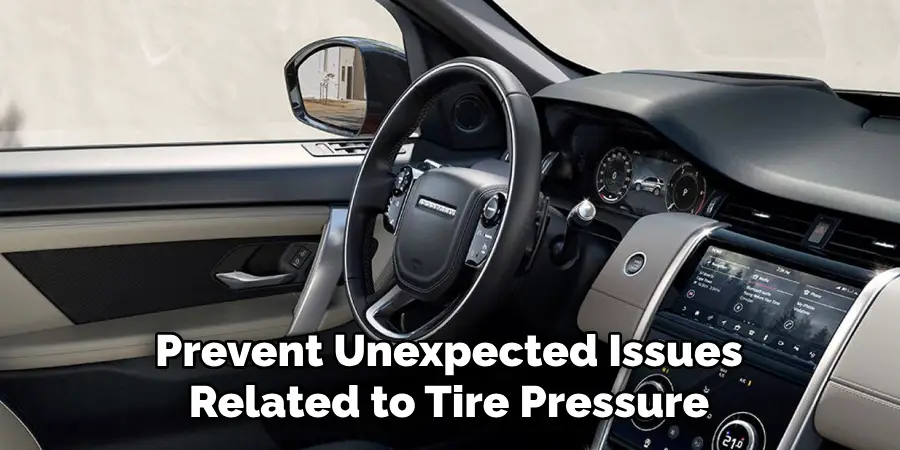Are you getting frustrated with the constant flashing of your tire pressure light? Do you feel like you are constantly filling up your tires with air only to have the light come back on again?
Properly maintaining your vehicle’s tire pressure monitoring system (TPMS) is essential for ensuring safety and efficiency on the road. Over time, TPMS sensors might need to be reset due to tire rotations, replacements, or pressure changes. Resetting these sensors is straightforward and does not require professional assistance.

Understanding how to reset TPMS sensors not only keeps your vehicle running smoothly but also helps avoid potential issues with underinflated or overinflated tires, which can lead to dangerous driving conditions and compromised fuel efficiency. Let’s dive into the steps to reset TPMS sensors and some valuable tips to remember.
What Will You Need?
Before we start, here are a few items you will need to reset the TPMS sensors in your vehicle:
- A tire pressure gauge
- An inflation pump (hand or electric)
- Your vehicle’s owner manual (to locate the TPMS reset button and recommended tire pressure)
Once these items are gathered, you can start resetting your TPMS sensors.
10 Easy Steps on How to Reset TPMS Sensors
Step 1: Check Your Tire Pressure
Start by using your tire pressure gauge to check each tire’s pressure, comparing it to the recommended levels listed in your vehicle’s owner manual or on the driver’s side door jamb. It’s crucial to ensure that your tires are inflated to the correct pressure before resetting. If any tire is underinflated, use the inflation pump to add air until it reaches the recommended psi (pounds per square inch).

Similarly, if any tire is overinflated, release air gently by pressing the pin inside the valve stem until the tire pressure aligns with the manufacturer’s recommendations. Accurate tire pressure helps extend tire life and ensures optimal vehicle performance and safety.
Step 2: Turn on the Ignition
Once you’ve confirmed that all tires are at the recommended pressure, proceed by turning on your vehicle’s ignition. Be sure not to start the engine; switch the ignition to the “on” position. This will power the vehicle’s systems and allow you to reset the TPMS. In this position, the dashboard lights should be illuminated, including the tire pressure light, if the system still needs to be reset.
Step 3: Locate the TPMS Reset Button
Once the ignition is on, locate the TPMS reset button in your vehicle. This button is often found beneath the steering wheel or within the glove compartment. Refer to your vehicle’s owner’s manual if you’re unable to find it. After locating the reset button, press and hold it for about three seconds until the tire pressure light blinks on the dashboard. This blinking indicates that the vehicle’s TPMS is in the process of being reset. This step is crucial as it signals to the system that the correct tire pressures have been verified and accepted. If the light does not blink, repeat this step to ensure the reset command has been registered.
Step 4: Drive the Vehicle
After confirming that the TPMS reset has been initiated, take your vehicle for about 10 to 15 minutes at speeds exceeding 30 mph. This allows the vehicle’s system to calibrate and recognize the correct tire pressure settings. During this drive, the TPMS sensors will monitor the tire pressure and communicate with the control unit, ensuring everything functions correctly. Once complete, check your dashboard to ensure the tire pressure light has turned off, indicating a successful reset.

Step 5: Turn Off the Ignition
After completing the drive and confirming that the TPMS light is off, safely park your vehicle and turn off the ignition. This step ensures that the TPMS system has had adequate time to save the reset settings. It’s a good practice to wait a few minutes before restarting the vehicle, allowing any residual system processes to be completed. Once this is done, the TPMS sensors should be fully reset and calibrated to the current tire pressures.
Step 6: Recheck Tire Pressure
Once the TPMS sensors are reset, it’s important to recheck the tire pressure to ensure it hasn’t changed during the process. Use the tire pressure gauge to verify each tire is still at the manufacturer’s recommended pressure level. Sometimes, pressure may fluctuate slightly due to driving or environmental conditions, and it’s vital to maintain consistency for optimal performance.
If needed, adjust the tire pressures accordingly. This final check ensures that your vehicle runs smoothly, with accurate TPMS readings preventing any further alerts on your dashboard. Keeping the tires at the correct pressure safeguards your safety on the road and enhances fuel efficiency and tire longevity.
Step 7: Verify the Reset Process
After you have rechecked and adjusted the tire pressures as needed, it’s time to verify the reset process of the TPMS sensor. Turn the ignition on again without starting the engine, and observe the vehicle’s dashboard. If the tire pressure warning light has disappeared, it confirms that the TPMS reset was successful and the sensors accurately detect the current tire pressures.

If the light remains on, double-check that all previous steps were conducted correctly and that the tire pressures are correct. Sometimes, the system might take a few driving cycles to adjust fully, so be patient if the light fades away gradually. Conduct this verification step in a well-ventilated area and ensure that the vehicle is parked securely for safety throughout the process.
Step 8: Repeat the Process if Necessary
If the tire pressure warning light remains on after completing all the steps, consider repeating the process to ensure no steps were missed. Start again by checking the tire pressure; even a slight deviation can affect the TPMS readings. Ensure you follow each step carefully, paying particular attention to the tire pressures and the reset button. Additionally, ensure all tires are in good condition, as damaged or worn tires might cause inconsistencies in pressure readings and system alerts.
If the issue persists despite correctly following the instructions, it may indicate a deeper problem with the sensors or the TPMS system, necessitating a check-up by a professional. Repeating these steps can help confirm whether a simple oversight or a more complex issue is causing the persistent warning light.
Step 9: Seek Professional Assistance
If, after repeating the process, the tire pressure warning light is still on, it may be time to seek professional assistance. Persistent issues could indicate a malfunction within the TPMS sensors or another underlying problem within the vehicle’s system. A qualified mechanic can perform a thorough diagnostic check to identify and resolve technical faults. It’s crucial to address these issues promptly to ensure your vehicle remains safe and reliable. Professionals have the necessary tools and expertise to assess whether the sensors need recalibration or replacement, preventing further complications.
Step 10: Maintain Regular Tire Inspections
Once the TPMS system functions correctly, you must incorporate regular tire pressure checks into your vehicle maintenance routine. You should check your tire pressure at least once a month and before long trips to ensure your tires remain at the recommended pressure. Keeping the tires inflated optimizes safety, fuel efficiency, and lifespan. Additionally, inspect your tires for signs of wear or damage during these checks, as these could affect performance and lead to further TPMS alerts. Practicing these regular inspections will help maintain optimal vehicle conditions and prevent unexpected issues related to tire pressure and safety.

By following these steps, you can successfully reset your TPMS sensors and maintain optimal tire pressure for a safe and efficient driving experience.
5 Things You Should Avoid
- Ignoring Manufacturer Guidelines: Avoid disregarding the specific reset procedures outlined by your vehicle’s manufacturer. Following these detailed instructions is crucial, as different models may require unique steps or tools to reset the TPMS sensors effectively.
- Skipping Tire Pressure Checks: Complete the initial or final tire pressure checks. Inaccurate tire pressure can lead to improper TPMS readings and continued dashboard alerts. Always use a reliable tire pressure gauge to ensure the accuracy of your measurements.
- Overlooking Tire Condition: During the reset process, avoid neglecting the physical condition of your tires. Damaged or worn tires can cause incorrect pressure readings and subsequent TPMS alerts. Inspect your tires for any signs of wear or puncture.
- Rushing the Process: Do not rush through the reset steps. Each part of the process is significant, and hastiness can lead to errors or missed steps, preventing successful sensor recalibration.
- Ignoring Persistent Warning Lights: If the tire pressure warning light remains illuminated post-reset, do not ignore it. Persisting lights may indicate sensor issues or other mechanical faults that need professional attention to ensure driving safety.
Conclusion
How to reset TPMS sensors is a vital process to ensure accurate tire pressure monitoring and overall vehicle safety.
Following the outlined steps, from verifying tire pressures to ensuring proper sensor calibration, you can effectively address any warning lights and maintain a reliable driving condition. Regular maintenance and inspections and adherence to manufacturer guidelines will facilitate a successful reset process. Additionally, understanding when professional assistance is necessary can prevent long-term system issues and enhance vehicle performance.
Whether dealing with minor pressure adjustments or sensor malfunctions, a systematic approach to resetting your TPMS sensors will keep your vehicle running smoothly and safely.
